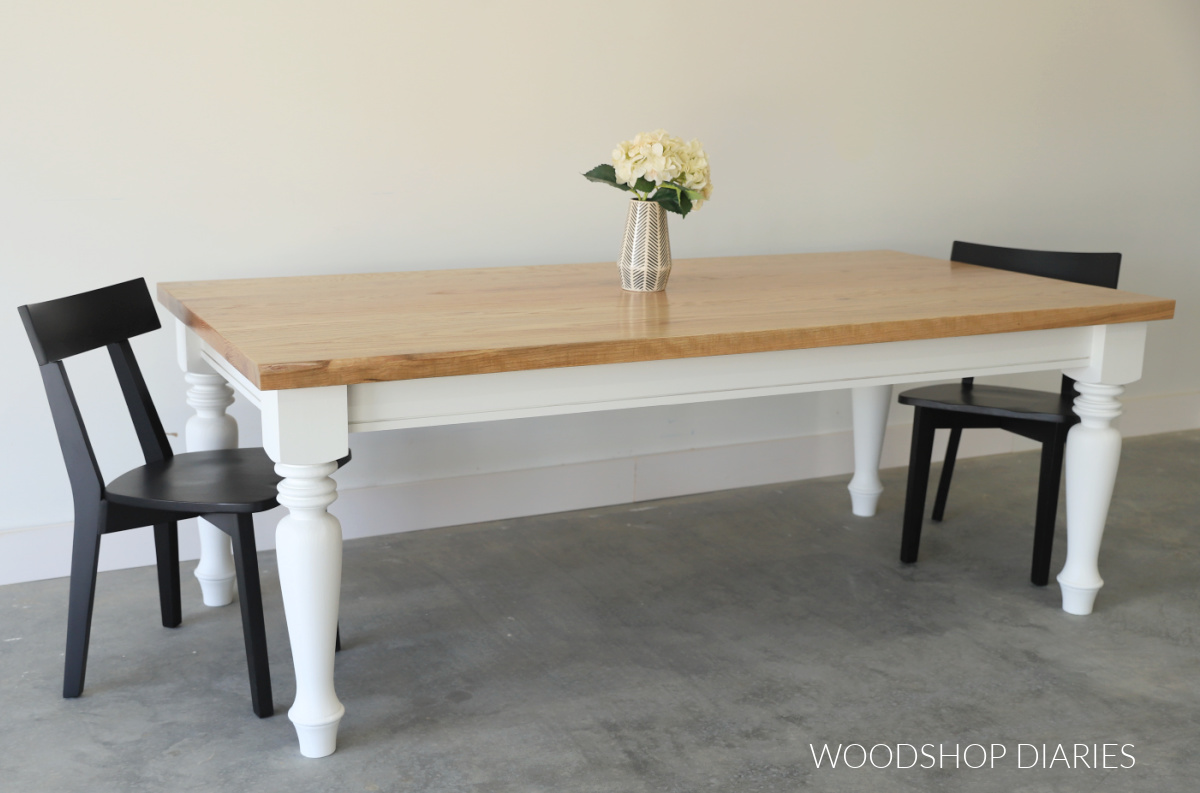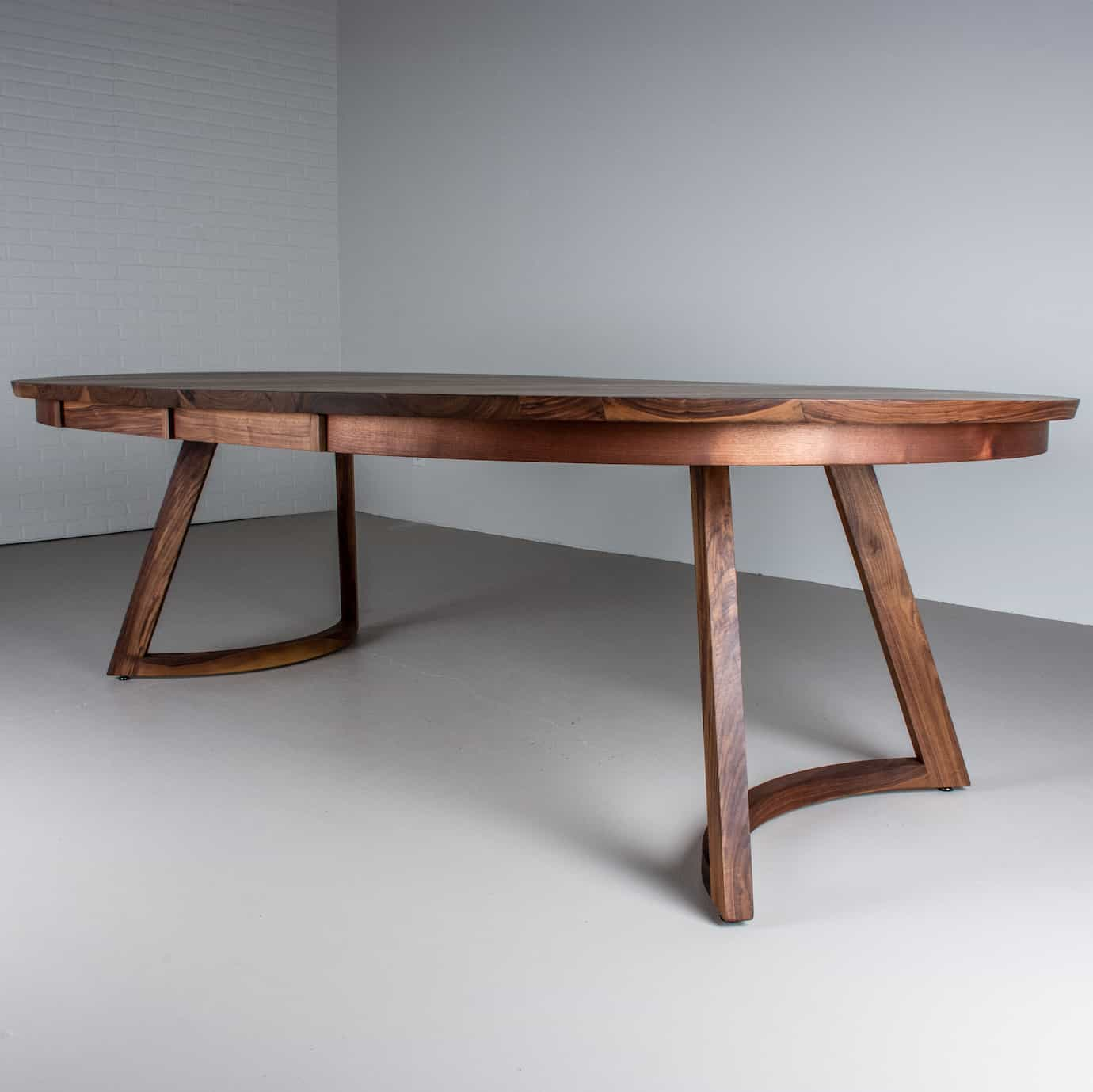Add a Rustic Touch to Your Table with Standard Dining Table Legs Wood
Wiki Article
Vital Considerations for Selecting the Right Table Legs Wood
Choosing the proper timber for eating table legs includes a nuanced understanding of different elements that influence both capability and aesthetic appeal. The choice of wood kind, varying from durable woods to a lot more fragile softwoods, plays an essential function in making certain longevity and security. Each of these aspects can drastically affect the overall experience of your dining room.Relevance of Timber Type

Hardwoods, such as oak, walnut, and maple, are commonly liked for their stamina and resistance to put on. These types of timber provide a durable structure that can stand up to daily use, making them optimal for dining tables that experience frequent gatherings. On the other hand, softer woods like want may be more susceptible to scrapes and dents, which may not be perfect for high-traffic areas.
Moreover, the selection of timber can also impact the ease of upkeep. Some woods require normal oiling or sealing to preserve their appearance, while others might be extra forgiving. Ultimately, picking the proper wood kind includes balancing visual considerations with practical needs, making sure that the dining table legs not only look enticing but additionally stand the test of time.
Assessing Stability and Stamina
When assessing table legs, one need to consider the security and strength they provide to the general structure. The legs are essential in supporting the table top and guaranteeing the eating experience is risk-free and enjoyable. A secure table is important for protecting against wobbling or tipping, which can cause spills or crashes during dishes.The choice of wood type substantially impacts stamina. Woods such as walnut, oak, and maple are generally a lot more durable and robust than softwoods like want or fir. In addition, the thickness and style of the legs play a critical function; thicker legs or those with a conical layout can offer better support and security.

Visual Considerations
While performance is extremely important, the aesthetic charm of eating table legs can not be neglected, as they dramatically influence the overall style and setting of the eating space. The choice of surface, wood, and style can take away or improve from the table's aesthetic influence.
Surfaces additionally play an important duty in visual appeals. A natural surface can highlight the timber's intrinsic charm, while repainted or tarnished legs can introduce color and individuality into the area. The percentage and scale of the legs loved one to the tabletop and surrounding furniture should be taken into consideration to make certain aesthetic equilibrium and communication.
Ultimately, the table legs ought to not only serve a practical function however likewise contribute to a natural and inviting environment, making them a vital consideration in the overall design of the dining location.
Upkeep Needs
To make certain long life and maintain the elegance of wood table legs, routine upkeep is crucial (Dining Table Legs Wood). Wood is an all-natural product that can be vulnerable to damage from moisture, warmth, and put on. Developing a routine care strategy will substantially improve the sturdiness of your dining table legs.Begin with normal dusting using a soft, lint-free cloth to get rid of dirt and debris that can damage the surface. For even more complete cleaning, use a light soap option and damp cloth, avoiding excess dampness that could leak into the timber. It is a good idea to apply a high-quality timber polish or conditioner every why not check here couple of months to nourish the timber and maintain its gloss.
Furthermore, consider the setting where the table is placed. Stay clear of direct sunlight, as it can create fading, and use rollercoasters or placemats to secure the surface from heat and dampness. Attend to any dents or scrapes immediately with proper wood filler or touch-up pens to stop additional deterioration. By adhering to these upkeep requirements, you will certainly not only maintain the aesthetic allure of your wooden eating table legs but additionally prolong their useful life expectancy.
Budget Plan and Price Variables
Spending plan and cost factors frequently play a vital duty in the decision-making procedure for picking wood eating table legs. When reviewing alternatives, it is important to develop a clear spending plan that straightens with your total furnishings financial investment. The expense of wooden table legs can vary dramatically based upon the sort of craftsmanship, design, and timber complexity.Woods such as walnut, cherry, and oak normally command higher rates as a result of their toughness and aesthetic charm. On the other hand, softer woods like pine might be much more budget-friendly however might not supply the exact same longevity. In addition, custom-made or artisan-crafted legs can incur added expenses, reflecting the ability and time bought their development.
It is likewise important to take into consideration the prospective long-term worth of your investment. While deciding for lower-cost materials may seem economically prudent originally, they may call for more constant replacement or repair work, ultimately click here now boosting overall expense.
Therefore, stabilizing quality and expense is essential. Prioritize products that meet your aesthetic choices while ensuring they fit easily within your budget, have a peek at this website enabling you to develop a dining location that is both useful and aesthetically appealing.
Conclusion
In verdict, picking the ideal timber for dining table legs requires mindful factor to consider of numerous aspects, consisting of timber kind, stability, looks, maintenance, and budget. Ultimately, a well-informed decision will boost the long life and aesthetic charm of the dining table, guaranteeing complete satisfaction and performance for years to come.Selecting the best type of timber for eating table legs is vital for both aesthetic allure and architectural stability. Eventually, selecting the appropriate timber kind includes balancing aesthetic factors to consider with practical needs, making sure that the dining table legs not only look enticing however likewise stand the examination of time.
It is advisable to use a premium timber gloss or conditioner every couple of months to nourish the wood and keep its appeal.
The cost of wood dining table legs can vary dramatically based on the type of wood, workmanship, and style complexity.
In conclusion, selecting the suitable timber for dining table legs necessitates cautious consideration of different factors, including timber type, security, aesthetic appeals, maintenance, and budget plan.
Report this wiki page